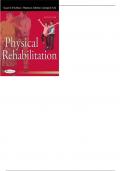Class notes
Lecture Notes - Behaviour & Environment 3: Cognition, Attitude & Motivation
- Course
- Institution
Here are my lecture notes of all lectures of the course B&E 3. The notes include the pictures used in the slides. I completed this course with a 8 :)
[Show more]












